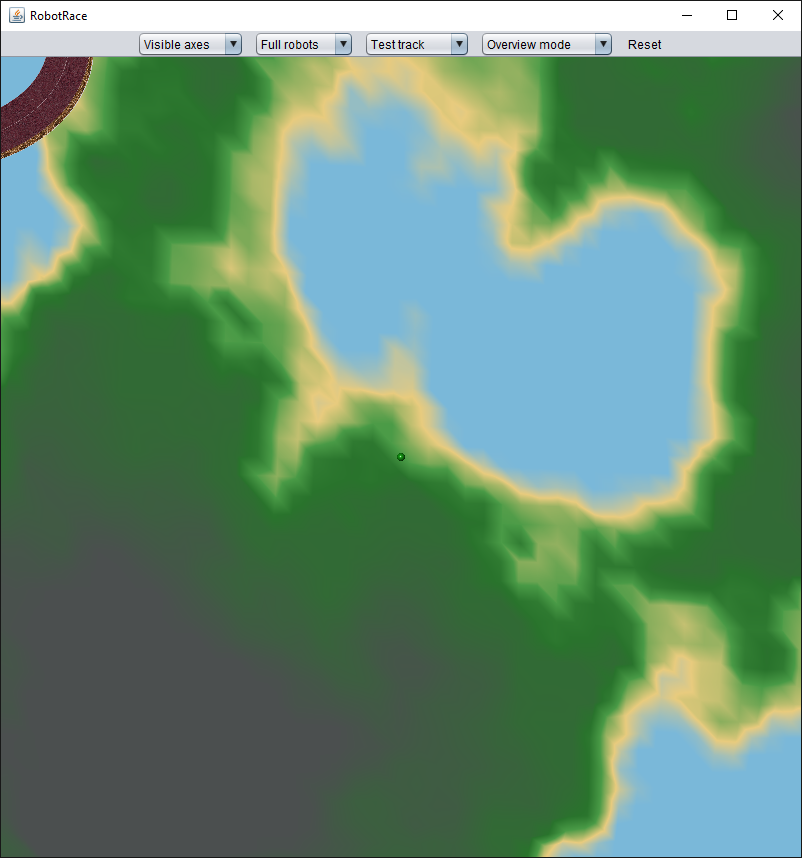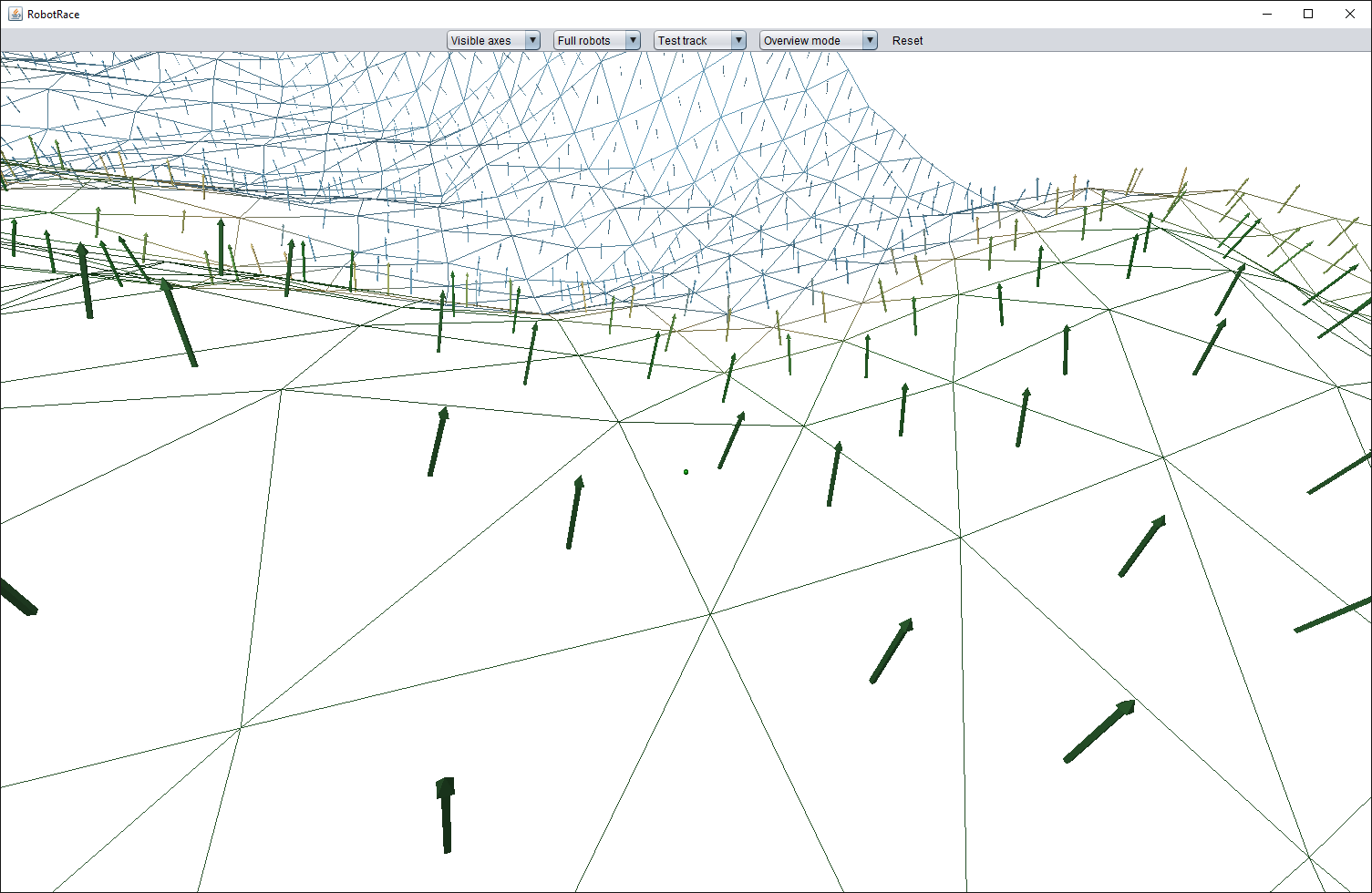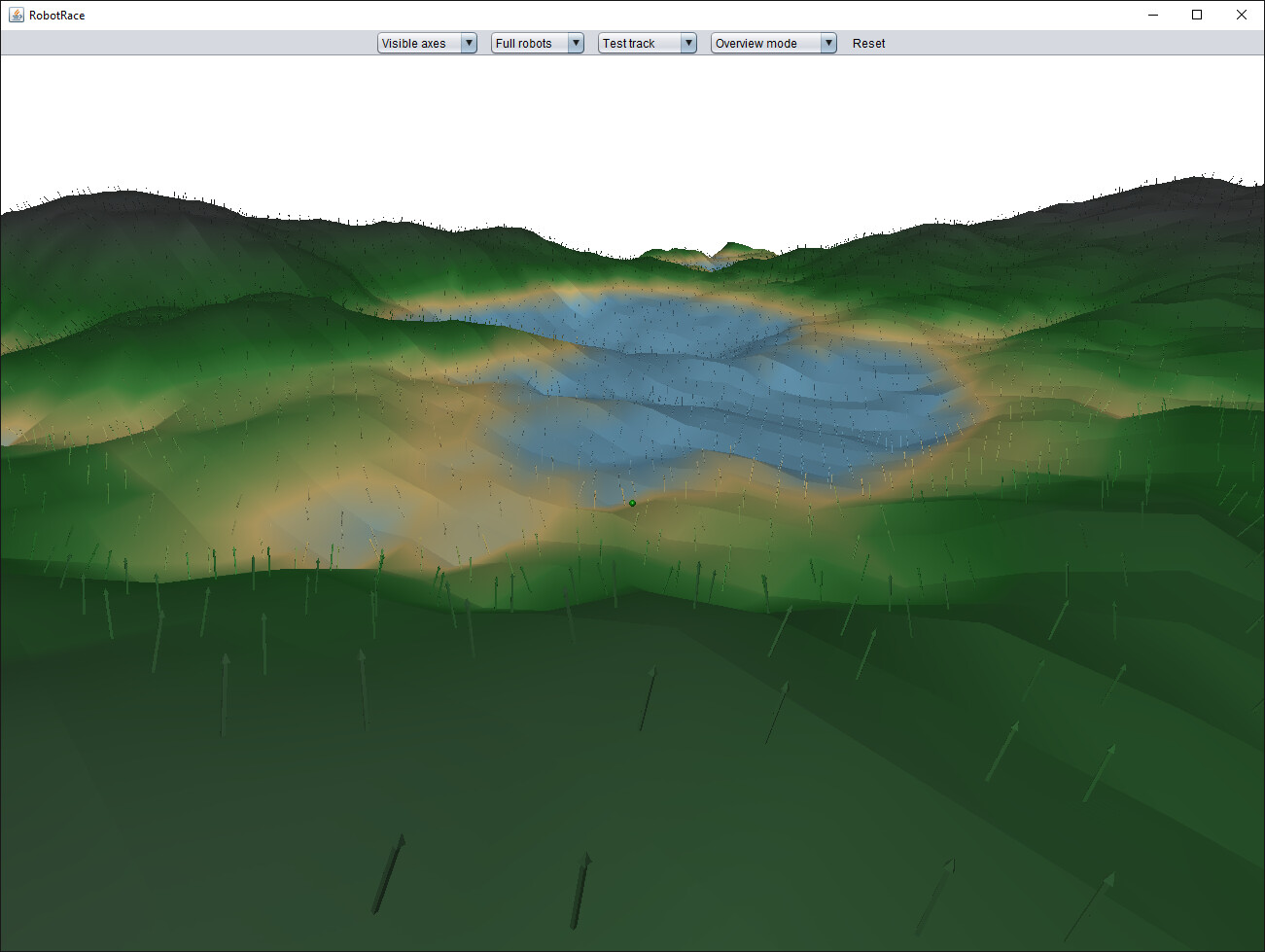Hello,
I’m currently working on a small OpenGL (JOGL) project where I generate a terrain using simplex noise.
To create some depth in the terrain while moving the camera, I want to add shaders over the texture.
What I tried so far:
Using a 1D texture to assign different colors to different heights.
Using a second material over the 1D texture to try and give it shading.
The results are as follows:
-I cannot insert images in this post, see first reply for screenshots
As you can see, ‘stripes’ appear in the landscape when using the material.
What I have is the following:
-The code that draws the field:
public void draw(GL2 gl, GLU glu, GLUT glut, Drawer drawer) {
Material.TERRAIN.use(gl);
texture.bind(gl);
if (showGrid)
gl.glPolygonMode( gl.GL_FRONT_AND_BACK, gl.GL_LINE );
ArrayList<Vector[]> normals = new ArrayList<>();
for(int i=1;i<vectors.length;i++) {
gl.glBegin(gl.GL_TRIANGLE_STRIP);
for (int j = 0; j < vectors[i].length; j++) {
Vector normalTopRight, normalBottomLeft;
//Calculate normals top right
Vector v1, v2, triangleCenterTR;
if (j < vectors[i].length - 1)
{
v1 = vectors[i-1][j].subtract(vectors[i][j]);
v2 = vectors[i][j+1].subtract(vectors[i][j]);
normalTopRight = v2.cross(v1).normalized();
// Get center (a+b+c)*(1/3)
triangleCenterTR = (vectors[i][j].add(vectors[i - 1][j]).add(vectors[i][j + 1])).scale(1.0 / 3);
} else {
v1 = vectors[i-1][j].subtract(vectors[i][j]);
v2 = vectors[i][j-1].subtract(vectors[i][j]);
normalTopRight = v1.cross(v2).normalized();
// Get center (a+b+c)*(1/3)
triangleCenterTR = (vectors[i][j].add(vectors[i-1][j]).add(vectors[i][j-1])).scale(1.0/3);
}
normals.add(new Vector[] {triangleCenterTR, triangleCenterTR.add(normalTopRight)});
if (j != 0)
{
v1 = vectors[i][j].subtract(vectors[i-1][j]);
v2 = vectors[i-1][j-1].subtract(vectors[i-1][j]);
normalBottomLeft = v2.cross(v1).normalized();
// Get center (a+b+c)*(1/3)
Vector triangleCenterBL = (vectors[i - 1][j].add(vectors[i][j]).add(vectors[i - 1][j - 1])).scale(1.0 / 3);
normals.add(new Vector[]{triangleCenterBL, triangleCenterBL.add(normalBottomLeft)});
} else {
normalBottomLeft = null; // If j==0, there is no bottom left triangle above
}
/**
* We have everything to start drawing
*/
// Shift left
// Set some color
if (j == 0) {
// Initialization vector
gl.glTexCoord1d(mapTextureToHeight(vectors[i][j].z));
drawer.glVertexV(vectors[i][j]);
} else {
drawer.glNormalV(normalBottomLeft);
}
gl.glTexCoord1d(mapTextureToHeight(vectors[i - 1][j].z));
drawer.glVertexV(vectors[i - 1][j]);
// Right down diagonally
if (j < vectors[i].length - 1) { // Skip if we are reached the end
gl.glTexCoord1d(mapTextureToHeight(vectors[i][j + 1].z));
drawer.glNormalV(normalTopRight);
drawer.glVertexV(vectors[i][j + 1]);
}
}
gl.glEnd();
}
if (showGrid)
gl.glPolygonMode( gl.GL_FRONT_AND_BACK, gl.GL_FILL );
if (drawNormals) {
for (Vector[] arrow : normals) {
if (yellowNormals)
Material.YELLOW.use(gl);
else
gl.glTexCoord1d(mapTextureToHeight(arrow[0].z));
drawer.drawArrow(arrow[0], arrow[1], 0.05);
}
}
texture.unbind(gl);
}
mapTextureToHeight returns a double (0.0 -> 1.0) based on the height,
whereas the ‘texture’ variable is a 1D texture where 0.1 = water color, 0.25 = sand color, etc.
Does anyone have any idea what might be causing those stripes?
My idea is the sudden change in the normal vector per vertex, causing the light to cast different on certain triangles. Is there any way to ‘smoothen’ this?
Let me know if you need to see more code/classes
any help will be greatly appreciated!
Thanks,
Dennis



